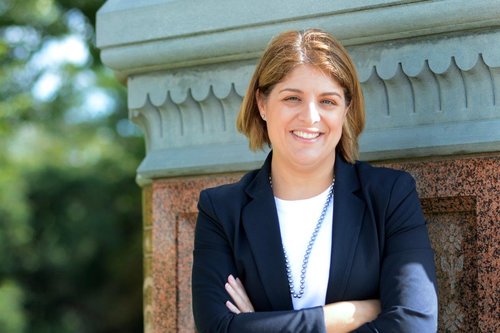Frontline Blog
What a Long Strange Year 2017 has been in Public Health: Historic Storms, “Banned Words,” and Deep Funding Cuts – Just to List a Few
December 2017
By Chrissie Juliano, MPP, Director of the Big Cities Health Coalition

In 2017, governmental public health shined in our country. In the face of historic natural disasters in Texas, Florida, Puerto Rico, and California, public health staff on the front lines dedicated to serving the American people – no matter what – did their work and delivered. Many stayed behind when others fled, or travelled from their safe, dry homes to help those in danger, save lives, or clean up.
Multiple disease outbreaks, like the current Hepatitis A challenge affecting San Diego and Los Angeles Counties and Detroit (really all of Southeast Michigan) have been fought by dedicated, disciplined professionals, for months on end.
The opioid epidemic raged, killing adults who should have been in their prime, and orphaning countless children. Public health experts were nimble, creative, and simply impressive, as they helped everyone they could all day, every day, all year.

In short, public health “showed up” this year, and the field’s ability to meet these varied challenges is the silver lining in a distressing string of events. 2017 showed the resilience of communities and first responders alike.
Meanwhile, the Centers for Disease Control and Prevention (CDC), the national and world leader charged with advancing public health science meant to prevent disease and death, was under unprecedented and sustained attack. Like many of you, I was shocked this weekend when a Washington Post article alleged that CDC was “banned” from using seven words – “vulnerable,” “entitlement,” “diversity,” “transgender,” “fetus,” “evidence-based,” and “science-based.” While #7bannedwords swept Twitter and additional reporting revealed it to be HHS-wide, even more recent reporting suggested this was just a nervous career staffer trying to advocate for his/her program in a challenging political environment. Regardless of whether or not these words are or are not, “banned,” this continued effort to undermine science and the evidence-base – central to the work of our field – it is not new. And, the current Administration’s track record of following the science and deferring to experts when devising policy is questionable at best.
As in years past, but even more so in 2017, Congress seemed determined to underfund CDC to a point that undermines its mission, mostly through repeated attempts to “repeal and replace” the Affordable Care Act (ACA). Doing so would not just have meant millions of people losing access to their health care, but also repealing a much needed, and much relied upon, funding stream for public health: the Prevention and Public Health Fund (PPHF). The PPHF makes up 12% of CDC’s budget, and although it survived the health care debate, it remains under attack today.
As both the Children’s Health Insurance Program (CHIP), which is a crucial source of health insurance for millions of American families, and the entire Federal Government, are running out of funds, Congress is currently considering a stop-gap legislative measure, since they have failed to pass a budget (work generally done in the early fall, when the fiscal year starts). Unfortunately, in looking for a way to pay for the CHIP extension, they have yet again raided the Prevention Fund. This continued effort of “robbing Peter to pay Paul” is unacceptable. For Americans to be healthy, they not only need affordable access to care, but they also need a strong, well-funded public health system that prevents disease and suffering in the first place.
The PPHF is essential to local health departments, most of which rely very heavily on federal funding. It was designed to provide additional dollars to support disease prevention in communities across the country, including addressing many of the leading causes of death. These activities were meant to complement medical activities that newly found health insurance for millions would cover. It sought to spend dollars preventing conditions that drive our rising health care costs, including cancer, heart disease and stroke, diabetes, and asthma. Over time, these funds have come to make up 12% of the CDC’s annual budget and cover activities such as the 317 Immunization Program, which plays a critical role in insuring access to important immunizations, which help lead to reductions in preventable disease.
The Fund also helps identify and track emergent disease outbreaks, like Zika, and routine foodborne illness outbreaks, like salmonella, through epidemiology and lab capacity dollars, the way in which many local and state health agencies do this work. And, the incredibly small share of federal dollars that support preventing lead poisoning in communities across the country would be deeply cut. Incidentally, each dollar invested in lead poisoning prevention yields in a return on investment of $17–$221 or a net savings of $181–269 billion. As with so many prevention programs, we should be supporting these programs not just because it’s the “right” thing to do, but because, in the medium-to-long term, they will save us money.
Finally, the deficits created by the tax bill also create an undetermined, ticking time bomb threat to the PPHF, not to mention a host of other non-defense programs across the entire federal government. Because deficits are projected to be so large, they will trigger a provision called the Statutory Pay-As-You-Go Act (SPAYGO), which will mandate deep cuts. Congress must, as soon as it returns in the new year, agree on a path forward on so-called budgetary caps and how they will address SPAYGO.
As many of us in Washington continue to fight for the funding and policy battles “inside the beltway,” we cannot forget the importance of the CDC to the work happening in communities across the country. The agency is a key advisor, source of critical funding, and leader to those practicing local public health around the world. It should be a beacon for science, both in research and practice. Unfortunately, all too often public health professionals are not given the tools they need to fully do their jobs, even when that need seems greater than ever. The CDC, along with governmental public health departments across the country, have become accustomed to doing more with less.
In times where policymakers are making hard decisions about spending scarce dollars, both the Trump Administration and the Congress should be following the science, looking at the evidence-base, and funding programs that are based on best- or promising-practices. Unfortunately, their actions time and again, whether by failing to allocate dollars as part of the opioids emergency, or doing away with regulations that protect our food, air, and water, have shown that when the science isn’t convenient, it doesn’t matter.
The bottom line is, science, the evidence-base, and protecting our communities must be the number one priority of a government that serves its people. When our government censors experts, ignores the science, or cuts critical public health programs to the bone, it fails us. Our field of public health fought hard in 2017, and we should be proud of that. But, no one should expect us to let up in 2018 either.